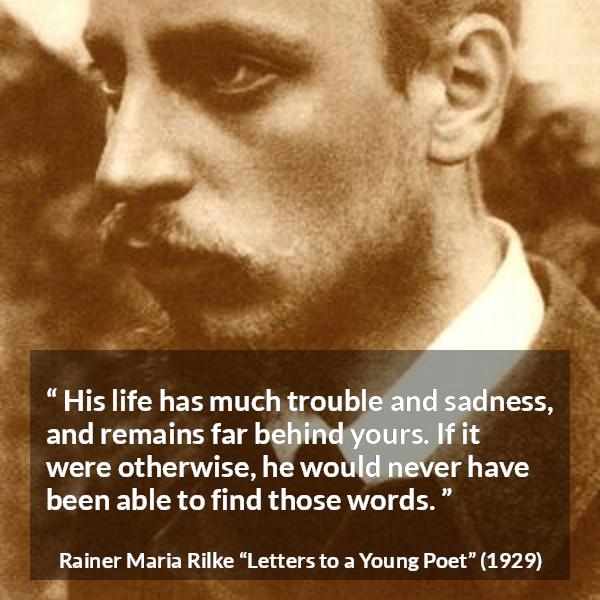
Kappus left his own side of the correspondence out of the book. In the years following their correspondence, Kappus went on to write screenplays and serialized novels, now largely forgotten Rilke, alas, didn’t make him into a poet.Īnd yet, Kappus, who died in 1966, did produce one book that is still widely read: in 1929, more than a quarter century after their initial correspondence, he published all but one of Rilke’s letters to him under the title “Briefe an einen jungen Dichter.” In the decades that followed, “ Letters to a Young Poet,” as the book is known in English, became a talisman for young aspiring writers, who felt directly addressed by the contents of the envelope with the blue seal and Paris postmark, by the words that began beneath Kappus’s name, in Rilke’s hand. As far as we know, they met only twice: once at a reading in 1907, and again by chance in the summer of 1926, months before Rilke died of leukemia. Kappus and Rilke wrote letters to each other for nearly two years, and then, after a four-year hiatus, exchanged a few more.

In the final lines of “Archaic Torso of Apollo,” Rilke wrote that message down: “You must change your life.”īut if the “you” of Rilke’s famous sonnet seems universal, his letters to Kappus were addressed to a particular person, whose life was undergoing a particular and urgent crisis. Though it was headless, its torso, he wrote, seemed to glow “like a lamp” it “burst like a star.” Its light carried a message, an answer to the questions with which Kappus had been grappling-the kinds of questions that anyone facing an unknown future must confront. Five years after responding to Kappus for the first time, Rilke found himself contemplating a marble sculpture of a Greek youth that he had seen in the Louvre. Letters summon us in this way so too can art. The invitation is both estranging and thrilling: Could you become the person whose name you read there?

Even before you’ve opened the envelope, your identity has been refracted through someone else’s.

To hold a letter addressed to you and see your own name in another’s hand is to feel an unsettling kind of pleasure.

Kappus wanted to know if his own poems were any good he wanted to know what to write and how to be. “The envelope,” he later wrote, “bore a blue seal and a Paris postmark, weighed heavy in my hand, and presented the same clear, beautiful, confident handwriting on the envelope as the letter itself had from first line to last.” The confidence that Kappus saw in the hand of his correspondent offered an inverse image of the self-doubt that had led him, months earlier, to write to that man-the poet Rainer Maria Rilke. In February, 1903, a nineteen-year-old Austrian military cadet named Franz Xaver Kappus received a letter whose contents, he hoped, would teach him how to live.


 0 kommentar(er)
0 kommentar(er)
